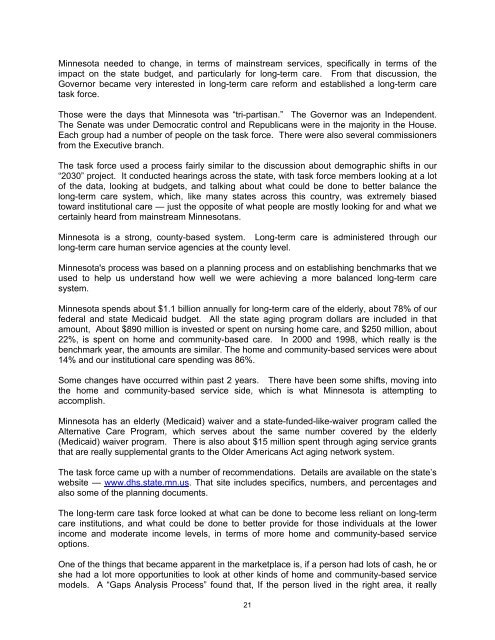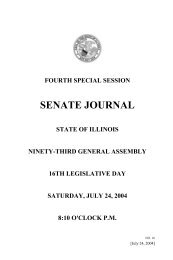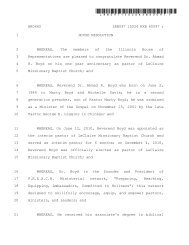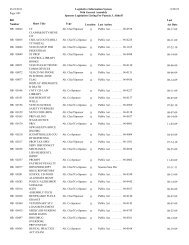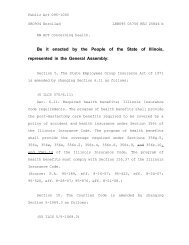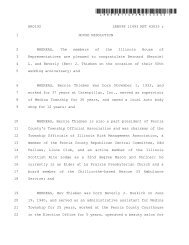Long-Term Care - Illinois General Assembly
Long-Term Care - Illinois General Assembly
Long-Term Care - Illinois General Assembly
Create successful ePaper yourself
Turn your PDF publications into a flip-book with our unique Google optimized e-Paper software.
Minnesota needed to change, in terms of mainstream services, specifically in terms of the<br />
impact on the state budget, and particularly for long-term care. From that discussion, the<br />
Governor became very interested in long-term care reform and established a long-term care<br />
task force.<br />
Those were the days that Minnesota was “tri-partisan.” The Governor was an Independent.<br />
The Senate was under Democratic control and Republicans were in the majority in the House.<br />
Each group had a number of people on the task force. There were also several commissioners<br />
from the Executive branch.<br />
The task force used a process fairly similar to the discussion about demographic shifts in our<br />
“2030” project. It conducted hearings across the state, with task force members looking at a lot<br />
of the data, looking at budgets, and talking about what could be done to better balance the<br />
long-term care system, which, like many states across this country, was extremely biased<br />
toward institutional care — just the opposite of what people are mostly looking for and what we<br />
certainly heard from mainstream Minnesotans.<br />
Minnesota is a strong, county-based system. <strong>Long</strong>-term care is administered through our<br />
long-term care human service agencies at the county level.<br />
Minnesota's process was based on a planning process and on establishing benchmarks that we<br />
used to help us understand how well we were achieving a more balanced long-term care<br />
system.<br />
Minnesota spends about $1.1 billion annually for long-term care of the elderly, about 78% of our<br />
federal and state Medicaid budget. All the state aging program dollars are included in that<br />
amount, About $890 million is invested or spent on nursing home care, and $250 million, about<br />
22%, is spent on home and community-based care. In 2000 and 1998, which really is the<br />
benchmark year, the amounts are similar. The home and community-based services were about<br />
14% and our institutional care spending was 86%.<br />
Some changes have occurred within past 2 years. There have been some shifts, moving into<br />
the home and community-based service side, which is what Minnesota is attempting to<br />
accomplish.<br />
Minnesota has an elderly (Medicaid) waiver and a state-funded-like-waiver program called the<br />
Alternative <strong>Care</strong> Program, which serves about the same number covered by the elderly<br />
(Medicaid) waiver program. There is also about $15 million spent through aging service grants<br />
that are really supplemental grants to the Older Americans Act aging network system.<br />
The task force came up with a number of recommendations. Details are available on the state’s<br />
website — www.dhs.state.mn.us. That site includes specifics, numbers, and percentages and<br />
also some of the planning documents.<br />
The long-term care task force looked at what can be done to become less reliant on long-term<br />
care institutions, and what could be done to better provide for those individuals at the lower<br />
income and moderate income levels, in terms of more home and community-based service<br />
options.<br />
One of the things that became apparent in the marketplace is, if a person had lots of cash, he or<br />
she had a lot more opportunities to look at other kinds of home and community-based service<br />
models. A “Gaps Analysis Process” found that, If the person lived in the right area, it really<br />
21


